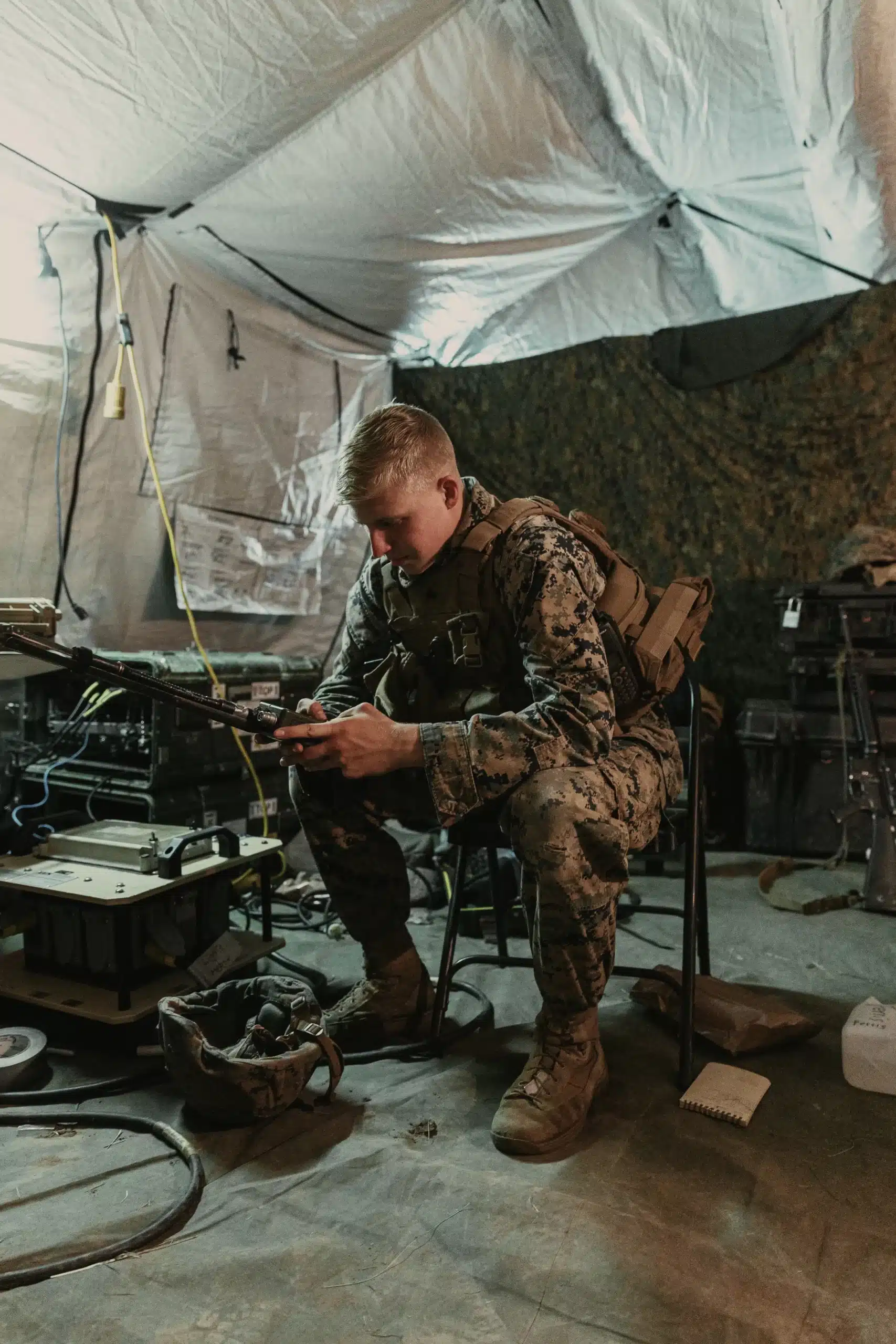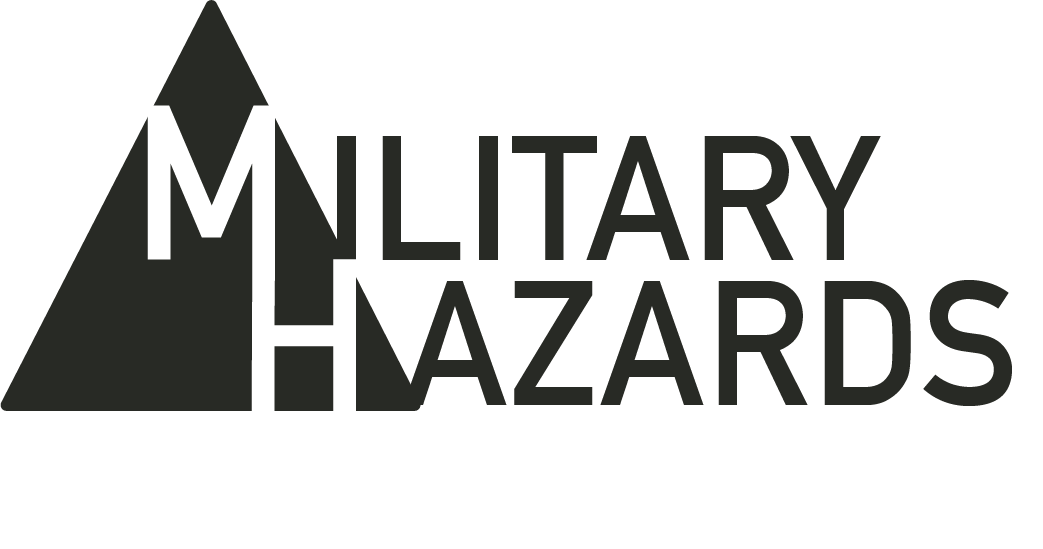Contact Our Legal Partner
"*" indicates required fields

Military personnel, no doubt, encounter an array of occupational hazards. And, this certainly includes exposure to hazardous chemicals like trichloroethylene. Trichloroethylene (TCE) is a chemical that poses significant health risks in military operations. Here, we dive into the occupational hazards associated with TCE exposure, its sources, and both short-term and long-term health risks associated with exposure to it. Additionally, we will discuss several effective strategies for reducing TCE exposure.
What is Trichloroethylene (TCE):
Trichloroethylene, commonly known as TCE, like benzene (LINK TO BENZENE ARTICLE) is a colorless, volatile liquid with a sweet odor. It is widely used in industrial solvents, including degreasers for metal and electronic components, paint, and strippers. In military settings, TCE may be used in various operations such as maintenance, cleaning of machinery, and equipment repair.
Sources of Trichloroethylene:
TCE can be encountered in many military-related activities. It is commonly used in degreasers and solvents for cleaning and maintaining military equipment as well as pain, paint strippers, and adhesives. TCE may also be present in contaminated water sources near military bases or facilities where it has been improperly disposed of.

Short-term Health Risks:
Short-term exposure to TCE can lead to several immediate health concerns. Inhalation or skin contact with TCE may result in the following symptoms:
- Headaches
- Dizziness
- Confusion
- Nausea
- Skin irritation
- Eye irritation
- Dizziness
- Confusion
- Numbness of the face
- Euphoria
Higher levels of exposure can cause respiratory distress, irregular heartbeat, liver damage, and even unconsciousness. If these symptoms are present after exposure to TCE, military personnel are advised to seek immediate medical attention.
Long-term Health Risks:
Long-term exposure to TCE certainly poses more significant health risks to military personnel. Indeed, such exposure has been associated with various adverse health conditions, including:
- Liver and kidney damage
- Neurological disorders
- Reproductive issues
- Increased risk of cancer (e.g., kidney cancer and non-Hodgkin’s lymphoma)
- Immune system dysfunction
- Hormonal imbalances
- Developmental issues
Reducing the Risk of Exposure:
To minimize the risk of TCE exposure among military personnel, several preventive measures should be implemented:
- Engineering: Thoughtful engineering practices and designs should be used to reduce TCE exposure. This can include the design and construction of ventilation systems, exhaust hoods, and automated cleaning systems that all minimize the physical handling of material containingTCE.
- Personal Protective Equipment (PPE): Providing appropriate PPE, including gloves, masks, goggles, and protective clothing, or ventilators to personnel who may come into contact with TCE is especially important.. PPE acts as a barrier and reduces the potential for skin contact and inhalation of TCE vapors.
- Training and Education: Military personnel should conduct comprehensive training and educational programs on the hazards of TCE exposure. Military personnel should also be educated on proper handling, storage, and disposal procedures for products containing TCE. They should also be trained on recognizing early symptoms of TCE exposure and the necessary steps to take in case of an incident.
- Medical Monitoring and Testing: Regular monitoring and testing protocols to assess TCE levels in the workplace should likewise be established. Routine air and water quality monitoring can help identify areas of potential exposure and enable prompt mitigation measures.
- Environmental Management: Employers and employees should also ensure proper storage, handling, and disposal of TCE and other hazardous substances. Implement rigorous waste management practices, including the use of approved disposal methods, to prevent contamination of soil and water sources. Additionally. regular monitoring of the surrounding air, water, and soil in and around military facilities should be conducted to detect any TCE contamination. This proactive approach helps identify potential exposure risks and allows for timely remediation actions.
- Substitution: Explore alternative solvents or cleaning agents that are less hazardous than TCE. Where feasible, replace TCE-containing products with safer alternatives to minimize the risk of exposure.
- Ventilation: Ensure adequate ventilation in work areas where TCE is used or stored. Proper airflow and ventilation systems help to minimize the concentration of TCE vapors in the air, reducing the risk of inhalation.
- Emergency Response: Develop and regularly update emergency response plans to address accidental spills, leaks, or other TCE-related incidents. Proper training, equipment, and protocols should be in place to effectively manage and contain such situations.
Trichloroethylene (TCE) exposure poses a significant occupational hazard to military personnel. As we have stated above, short-term exposure can result in immediate health effects, while long-term exposure increases the risk of severe health conditions. By implementing preventive measures such as preventative engineering strategies, proper PPE use, training programs, medical monitoring, and environmental management, our military personnel can effectively reduce the risk of TCE exposure. Prioritizing the health and safety of our military personnel should always be our top priority. Therefore, mitigating TCE related occupational hazards is a crucial aspect of achieving this goal.
